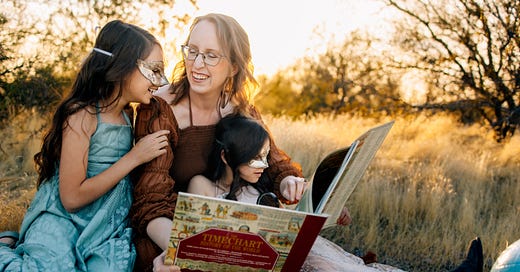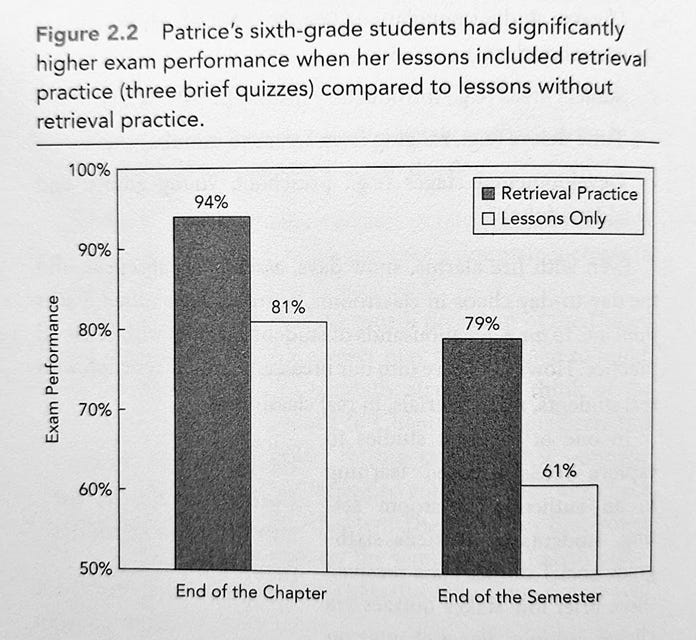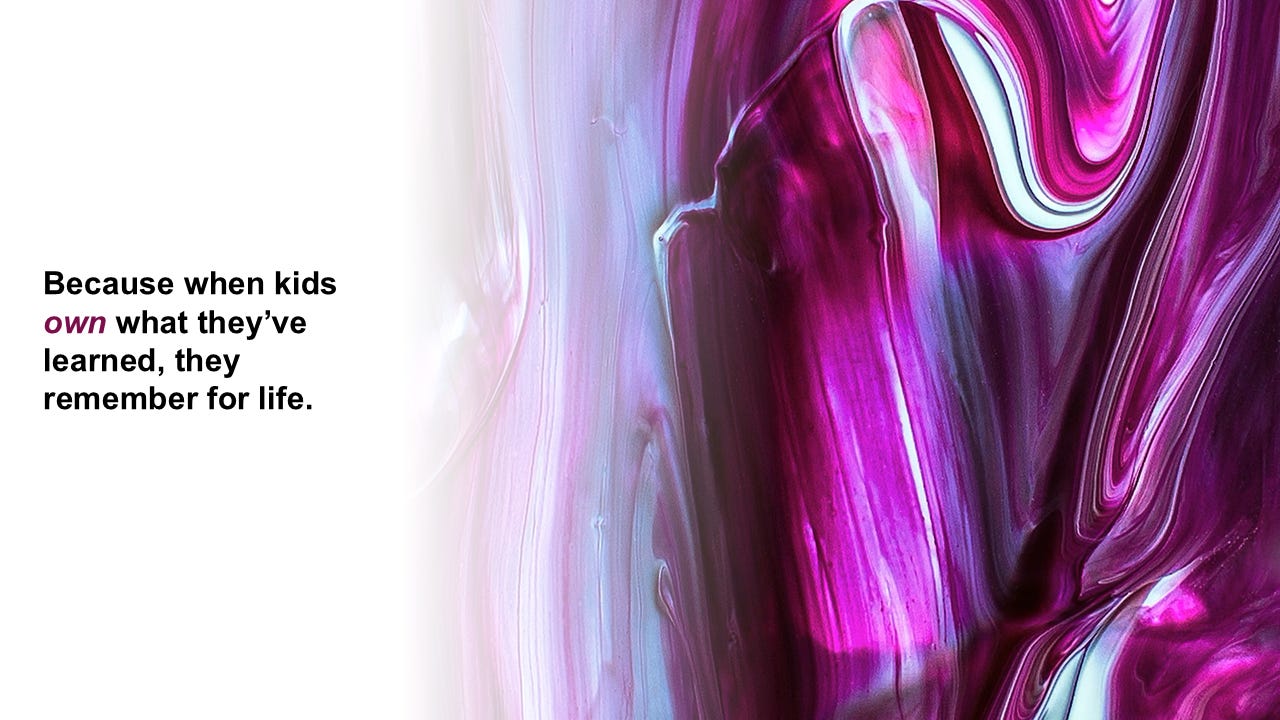It’s amazing what you can learn from the past.
In the late 1890s, a British teacher introduced a simple idea that would change the way millions of educators teach today - over a 100 years later.
Her name was Charlotte Mason, and hundreds of scientific papers and best-selling books support one of her most salient ideas - though they rarely give her credit.
The idea? Narration (or as modern scientists call it retrieval practice).
Narration is having a child retell what they’ve learned in their own words. Simple right? But science show that this strategy is surprisingly effective.
One study found that this simple technique helped an 8th-grade class raise their final grades from 79% (C) to 92% (A). The graph below shows how narration (called "Retrieval Practice" here) makes learning sticky—not just right after reading, but all semester long.
Why does this work?
When you read, you use your working (short-term) memory. You store only what is necessary to understand. Immediately after, you retain most (but not all) of what you read. But you forget it quickly - very quickly. After 24 hours, you remember only 30%, after a week only 10%.
BUT, if you ask your brain to “retrieve” or “recall” what you just learned, you tell it what you learned is worth remembering. The best part? The brain decides it’s not just important that day, but for a while! When we use retrieval practice or recall, kids retain nearly 80% of the knowledge weeks or even months later!
All this is great, but these studies were done in classrooms with quizzes. I promised you I could make history stick WITHOUT tests!
We can get the same results as retrieval practice, but in a far more beautiful and elegant way by looking to Charlotte Mason’s wisdom.
Charlotte Mason’s approach didn’t involve testing. Instead, it encouraged children to tell their own version of what they learned—in their own words.
Charlotte’s narration doesn’t just strengthen memory, it deepens understanding and empowers kids to become clear, confident communicators.
I started using narration in my learning club and it has been remarkable. Our 6-10 year olds went from barely remembering what happened, to squealing in delight during our trivia games.
Because when kids own what they’ve learned, they remember for life.
At this point, the question you should be asking is…..
Where do I start?
Here’s the thing. History isn't just about remembering dates. It’s the story of humanity. It provides a rich, fertile landscape from which we can teach our children about what it means to be human.
If we push too hard, that beautiful story will collapse into frustration.
Narration should be a joyful and celebrated expression of the past!
In today’s post, you’ll discover
Evidence-based strategies to boost your child’s memory (Spoiler: it’s not just about retelling a story)
5 joyful, creative ways to weave narration into your history lessons—no tests, no tears, just playful learning your kids will ask to do again.
If you find my work valuable, consider becoming a paid subscriber. It let’s me know you appreciate the long hours I put into writing and researching these posts. Thank you♥️







